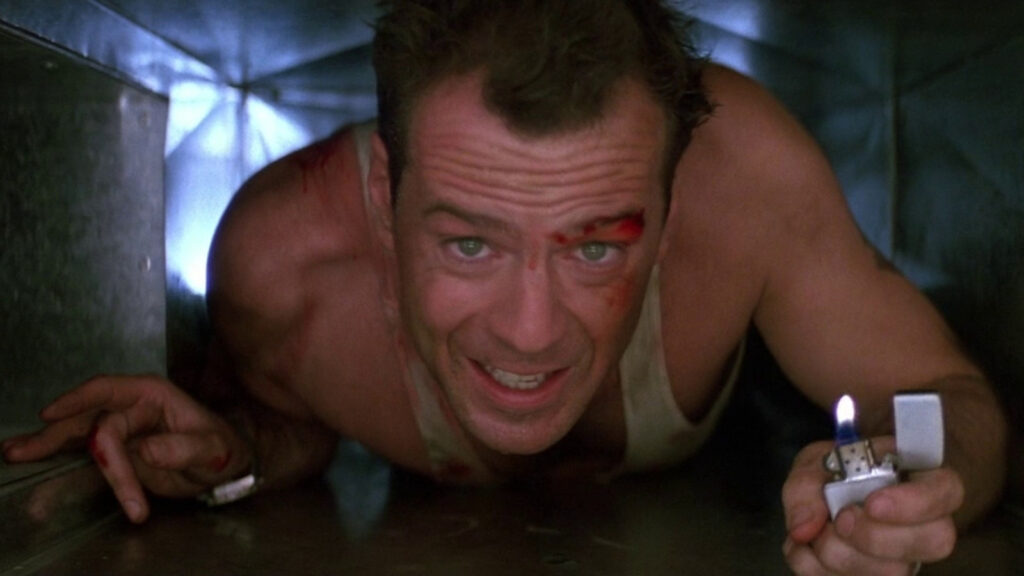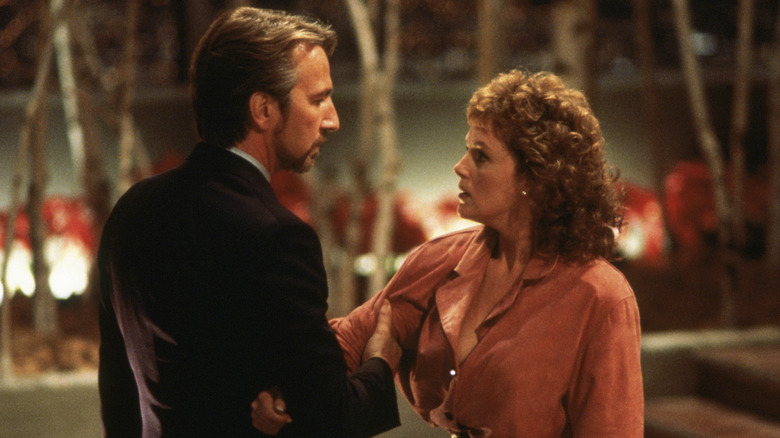With Bruce Willis in the role that made him a global superstar, “Die Hard” was an instant classic upon its 1988 release, going down in history as arguably the greatest action movie ever made. Willis stars as John McClane, a beleaguered NYPD cop who gets trapped in a high-rise building with a group of diabolical terrorists, led by Hans Gruber (Alan Rickman), who are holding McClane’s estranged wife — and dozens of other innocent people — hostage. The terrorists are after a stash of bearer bonds, and it’s up to McClane alone to stop them.
With the perfect mix of action, humor, and heart, “Die Hard” proved so successful that it spawned an entire subgenre of films. But it’s also one of many movies that people often forget is based on a book — in this case, Roderick Thorp’s 1979 novel “Nothing Lasts Forever.” Ironically, that book itself is a sequel to another novel, “The Detective,” which had previously been turned into a movie starring Frank Sinatra. In fact, Sinatra was originally offered the role of John McClane in “Die Hard” due to contractual obligations.
With such a complicated history, it’s probably not a surprise to learn that “Die Hard” takes quite a few creative liberties with its source material. For starters, the heroes are quite a bit different: In the book, the lead detective is Joe Leland, and he’s not even a cop anymore. Set years after the events of “The Detective,” Leland is retired when “Nothing Lasts Forever” begins. But that’s hardly the only major difference.
The stakes are different in Nothing Lasts Forever
Much of the plot of “Nothing Lasts Forever” is mirrored in “Die Hard,” with former NYPD cop Joe Leland visiting a high-rise building where terrorists takes a group of partygoers hostage. But the personal stakes for Leland are quite a bit different in the book: Since Leland is significantly older than McClane is in the film, he’s not there to visit his wife, but to see his adult daughter, who works in the building and is attending a Christmas party.
The villain, meanwhile, is Anton “Little Tony the Red” Gruber, a terrorist with whom Leland is already familiar. And the master plan isn’t to steal bearer bonds. In the book, Gruber is determined to snatch documents that will expose the Klaxon Oil Corporation — the company Leland’s daughter works for — and its involvement in a dirty business deal with a dictatorship in Chile. “Die Hard” streamlines the plot and turns Gruber into little more than a bank robber — but that’s hardly the biggest change the movie makes to the story.
That honor goes to the film’s conclusion, where McClane faces off with Gruber, who is holding his wife hostage. In the novel, Anton Gruber is holding Leland’s daughter at gunpoint, similar to the events at the climax of the film. But whereas McClane saves his wife and vanquishes Hans Gruber, Leland watches helplessly as both Anton Gruber and his daughter plummet from the skyscraper to their grisly deaths. It’s a grim conclusion, and it’s fair to wonder if “Die Hard” would have been as beloved had it ended on such a down note.


